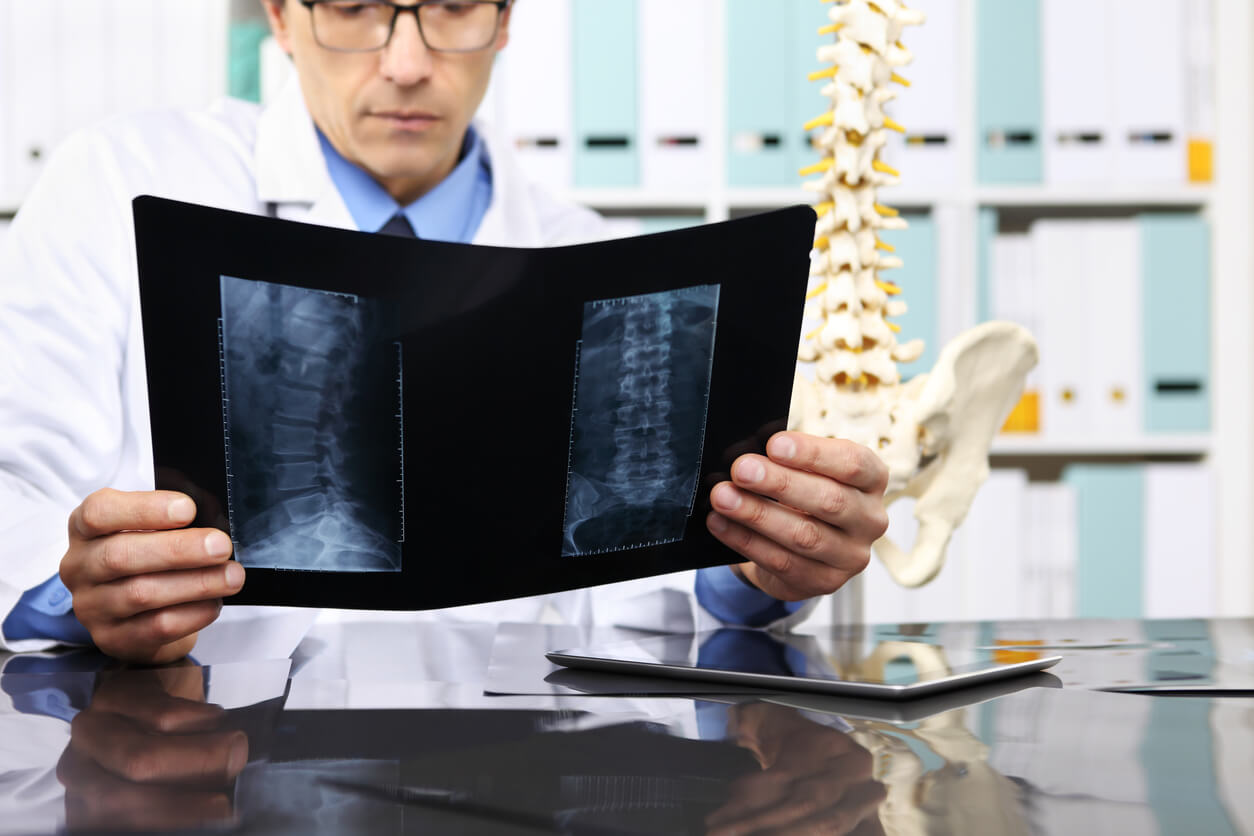If you live on Long Island, have back pain, and have been diagnosed as having a herniated disc, you may be confused about how to proceed. First of all, it is crucial that you have faith in the spine specialist practice you are consulting. Make certain that you confirm the medical group’s educational and professional credentials, extensive experience, and outstanding reputation among their patients as well as their peers. There is no substitute for having Long Island Spine Rehabilitation Medicine’s team of highly skilled physiatrists treating you.
It’s important for you to know that there is a great deal of misinformation surrounding disc herniation. This content is designed to help you separate medical truth from widespread myths.
Myth 1 – Discs Can Easily “Slip” Out of Place
Though the term “slipped disc” is in common usage, discs don’t really slide out position. In fact, such an occurrence is impossible since discs, the gelatinous cushions between the vertebrae, are firmly attached to the spinal column by two strong ligaments. In reality, discs herniate rather than slip, typically by the degeneration or protrusion most often associated with normal aging.
Lumbar discs (those in the lower back which are most likely to herniate) have been compared to jelly donuts, from which the “jelly” extrudes, sometimes, unfortunately, putting pressure on spinal nerves and causing moderate to severe pain.
Myth 2: Rest Is the Best Medicine for a Herniated Disc
While it may be necessary to lie down during moments of intense pain, mild exercise is usually the best approach to back pain, including herniated discs, unless there has been a sudden, violent injury. This doesn’t mean that you should go back to football, vigorous dancing or weight-lifting.
Simply walking, engaging in mild stretching and other gentle exercises as advised by a spine specialist is likely to help relieve the pressure that is causing the pain, and put your back into better alignment. The stronger and more well-conditioned your back is in the present, the better it will be protected from injury in the future. It is always best to consult with your spine specialist so that the exercises you do are customized to your needs.
Interventional pain management, such as corticosteroid injections directly into the foramen – the opening of the spinal column where the nerve root exits — can also make a tremendous positive impact. Such injections, which can also be used diagnostically, are administered under fluoroscopic guidance to ensure accuracy.
Myth 3: A Diagnosis of Disc Herniation Means Big Trouble
The fact that a herniated disc shows up on your MRI is not necessarily indicative of the source of your pain. Discs normally wear down as we age (this is why we become shorter as we get older), so having bulging discs is not a medical calamity. Studies have shown that most people, especially as they get older, have some degree of herniated discs, but many have no pain associated with this condition. In fact, herniated discs only cause pain in a small percentage of patients.
Myth 4: Herniated Discs Can Only Be Treated Surgically
A very high proportion of herniated discs improve and resolve on their own with physical therapy and anti-inflammatory medications, and/or the spinal injections mentioned above. With a program tailored to your particular problem, you may very well be able to recover from pain resulting from a herniated disc without a surgical procedure.
Myth 5: If You Go to a Spine Center with a Herniated Disc, You’ll End Up Having Surgery
This is definitely untrue. Knowledgeable medical professionals with integrity always try the least invasive treatments first and only recommend surgery when other, more conservative treatments have failed. Once you find a spine practice on Long Island whose practitioners have a reputation for excellence with colleagues and national organizations, you should have confidence in their prescribed treatment plan. A good test of a fine spine center is that your doctor should be happy to answer any of your questions and relieve any of your doubts with hard, factual information.
Myth 6 – Back Pain Is a Permanently Disabling Condition
Too many people believe that once they have a disc herniation, they will never be free of back pain, having been brainwashed with the idea that they will always have a limited range of motion and perpetual discomfort. This thought in itself is disabling — leading to inactivity and depression. Consulting with an experienced, well-trained team of professional spine specialists will put this myth to bed once and for all. With proper care and patience, you will be able to get back to the activities you enjoy — whether gardening, running, or lifting your child without any pain.
When you’re coping with a herniated disc (or think that you are), it is essential to have an integrated team of caring spine specialists working on your case. The complex nature of back problems may require a variety of innovative approaches. Make certain that the team you are working with is caring and flexible. They should have comprehensive knowledge of the causes of spinal problems, cutting-edge diagnostic methods to determine which cause is at the root of your difficulty, and treatment options to provide you with relief.
